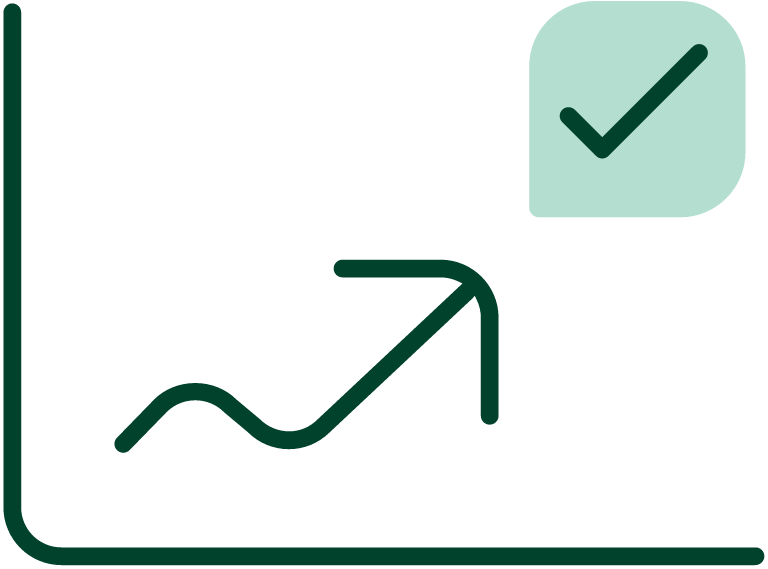What Is A/R Forecasting?
A/R forecasting, or accounts receivable forecasting, is a financial planning process that involves predicting future cash inflows from outstanding customer invoices and sales transactions. This strategic financial management practice enables businesses to estimate when and how much money they can expect to collect from their customers over specific time periods, typically ranging from weeks to months ahead.
Forecasting accounts receivable involves analyzing historical payment patterns, customer behavior, seasonal trends, and current market conditions to create accurate predictions about future cash collections. This process goes beyond simply looking at invoice due dates; it incorporates real-world factors such as customer payment habits, economic conditions, and industry-specific accounts receivable challenges that may affect collection timelines.
The practice of A/R forecasting has become increasingly sophisticated with the advent of modern financial technology and data analytics. Today’s businesses can leverage advanced algorithms, machine learning, AI, and comprehensive data analysis to create more accurate and nuanced forecasts than ever before. This evolution has made A/R forecasting an essential component of comprehensive financial planning and cash flow management strategies.
What’s the Importance of Forecasting Accounts Receivable
Forecasting accounts receivable serves as a cornerstone of effective financial management, providing numerous critical benefits that directly impact business operations and strategic decision-making. The importance of this practice extends far beyond simple cash flow planning, influencing everything from daily operational decisions to long-term business strategy.
One of the primary benefits of A/R forecasting is improved cash flow management. By accurately predicting when payments will arrive, businesses can better plan their own payment schedules and business initiatives, avoid cash shortages, and reduce reliance on expensive short-term financing options. This proactive approach to cash and accounts receivable management helps maintain healthy working capital levels and ensures that businesses can meet their obligations without disruption.
Risk management represents another crucial aspect of A/R forecasting importance. By identifying potential collection issues early, businesses can take preventive measures to address customer payment problems before they become serious delinquencies. This early warning system allows for timely intervention through accounts receivable strategies that can preserve customer relationships while protecting cash flow.
Furthermore, accurate A/R forecasting enables better resource allocation and operational planning. When businesses know when to expect payments, they can make more informed decisions about inventory purchases, staffing levels, marketing investments, and expansion plans. This improved planning capability reduces uncertainty and helps businesses operate more efficiently and profitably.
How to Forecast Accounts Receivable
Learning how to forecast accounts receivable effectively requires a systematic approach that combines historical data analysis with current market intelligence and customer-specific insights. The process begins with comprehensive data collection, gathering information about past payment patterns, customer behavior, seasonal variations, and economic factors that influence payment timing.
The foundation of effective A/R forecasting lies in establishing baseline metrics and understanding your organization’s unique collection patterns. This involves calculating key performance indicators such as Days Sales Outstanding (DSO), collection effectiveness ratios, and aging bucket analysis. The a/r days on hand formula becomes particularly valuable here, calculated as: (Accounts Receivable ÷ Daily Sales) × Number of Days, providing insight into how long it typically takes to collect outstanding receivables.
Segmentation plays a crucial role in accurate forecasting. Different customer types, industries, and geographic regions often exhibit distinct payment behaviors that must be accounted for separately. Large enterprise customers may have longer but more predictable payment cycles, while smaller businesses might pay more quickly but with greater variability. By segmenting customers and analyzing each group’s patterns, businesses can create more precise forecasts.
While this can be done imperfectly by a human, technology integration has revolutionized how businesses approach A/R forecasting. Modern forecasting systems can automatically analyze vast amounts of historical data, identify trends and patterns that might not be visible to human analysts, and continuously refine predictions based on new information. These systems often incorporate external factors such as economic indicators, industry trends, and even social media sentiment to enhance forecast accuracy.
The implementation of accounts receivable automation best practices can significantly improve forecasting accuracy by ensuring consistent data collection and standardized processes. Automated systems reduce human error, provide real-time updates, and generate comprehensive reports that support more informed forecasting decisions.
What is the Relationship between Cash Flow and Accounts Receivable Forecasting
The relationship between cash flow and accounts receivable forecasting is fundamentally interconnected, with A/R forecasting serving as a critical input for broader cash flow management and financial planning activities. Understanding this relationship is essential for maintaining financial stability and making informed business decisions.
Cash flow and accounts receivable forecasting work together to provide a comprehensive view of a company’s financial future. While A/R forecasting focuses specifically on predicting collections from outstanding invoices, cash flow forecasting encompasses all cash inflows and outflows, including receivables, payables, operational expenses, and capital expenditures. The accuracy of overall cash flow projections heavily depends on the precision of A/R forecasting, as receivables often represent a significant portion of expected cash inflows.
The timing aspect of this relationship cannot be overstated. Even when businesses have substantial accounts receivable on their books, the actual cash impact depends entirely on when those receivables convert to cash. A/R forecasting provides the temporal dimension that transforms balance sheet figures into actionable cash flow intelligence. This timing information enables businesses to identify potential cash crunches before they occur and take appropriate action.
Seasonal businesses particularly benefit from understanding the cash flow and accounts receivable relationship. Companies with cyclical sales patterns must carefully coordinate their A/R forecasting with seasonal cash flow planning to ensure adequate liquidity during slow periods. This coordination helps prevent situations where high receivables balances create a false sense of financial security while actual cash availability remains constrained.
The integration of A/R forecasting with broader financial planning also supports more sophisticated working capital optimization strategies. By understanding when receivables will convert to cash, businesses can better coordinate their payables timing, optimize inventory levels, and make more strategic decisions about financing and investment opportunities.
Best Practices for Accurate A/R Forecasting
Implementing best practices for accurate A/R forecasting requires a comprehensive approach that addresses data quality, methodology, technology utilization, and ongoing process improvement. These practices ensure that forecasting efforts deliver reliable results that support effective decision-making.
Ensure data quality and good data hygiene – Data quality forms the foundation of accurate A/R forecasting. Organizations must establish robust data collection and validation processes that ensure information accuracy, completeness, and consistency. This includes implementing standardized data entry procedures, regular data cleansing activities, and comprehensive audit trails that support forecast accuracy and accountability. Poor data quality can undermine even the most sophisticated forecasting models, making this aspect absolutely critical.
Conduct forecast regular reviews – Regular forecast review and adjustment represents another crucial best practice. A/R forecasting is not a set-and-forget activity; it requires continuous monitoring and refinement based on actual results and changing conditions. Successful organizations establish regular review cycles that compare forecast accuracy against actual collections, identify variance causes, and adjust methodologies accordingly.
Practice good communication with customers – Customer communication and relationship management significantly impact forecasting accuracy. Maintaining open lines of communication with customers about payment expectations, potential delays, and changing circumstances provides valuable intelligence that enhances forecast precision. This communication should be integrated into the overall accounts receivable process to ensure consistent and professional customer interactions.
Plan for multiple scenarios – Scenario planning and sensitivity analysis help address the inherent uncertainty in forecasting. Rather than relying on single-point estimates, best practice involves developing multiple scenarios that account for different potential outcomes. This might include optimistic, pessimistic, and most likely scenarios that help businesses prepare for various possibilities and make more robust financial plans.
Leverage technology and automation – Technology leverage and automation can dramatically improve both the efficiency and accuracy of A/R forecasting. Modern forecasting tools can process vast amounts of data, identify subtle patterns, and generate insights that would be impossible to achieve through manual analysis. Successful technology implementation requires proper training, change management, and ongoing optimization to achieve maximum benefits.
How Gaviti Helps Companies with A/R Forecasting
Gaviti provides comprehensive solutions that transform A/R forecasting from a manual, time-consuming process into a streamlined, data-driven operation. With an out-of-the-box report specifically designed for forecasting cash flow, businesses can immediately access sophisticated forecasting capabilities without lengthy implementation periods or complex setup requirements.
What sets Gaviti apart is the complete customizability of its reporting system, enhanced by AI-powered generation capabilities that adapt to your unique business needs and preferences. These intelligent reports go beyond standard templates, learning from your data patterns and industry requirements to deliver increasingly accurate and relevant forecasting insights.
Gaviti’s platform is built on industry-leading best practices for A/R forecasting, incorporating proven methodologies and frameworks that ensure reliable, actionable results. More importantly, Gaviti helps your entire team consistently follow these best practices through intelligent automation that eliminates manual errors, real-time updates that keep forecasts current with the latest data, and standardized processes that ensure consistency across all forecasting activities.
The platform provides 100% visibility to all relevant data, creating a single source of truth that empowers informed decision-making and collaborative forecasting efforts. By combining automated efficiency with comprehensive transparency, Gaviti enables businesses to achieve the accurate, timely A/R forecasting essential for optimal cash flow management and strategic financial planning.
Want to learn more? Schedule a live product demo with a Gaviti specialist.





















